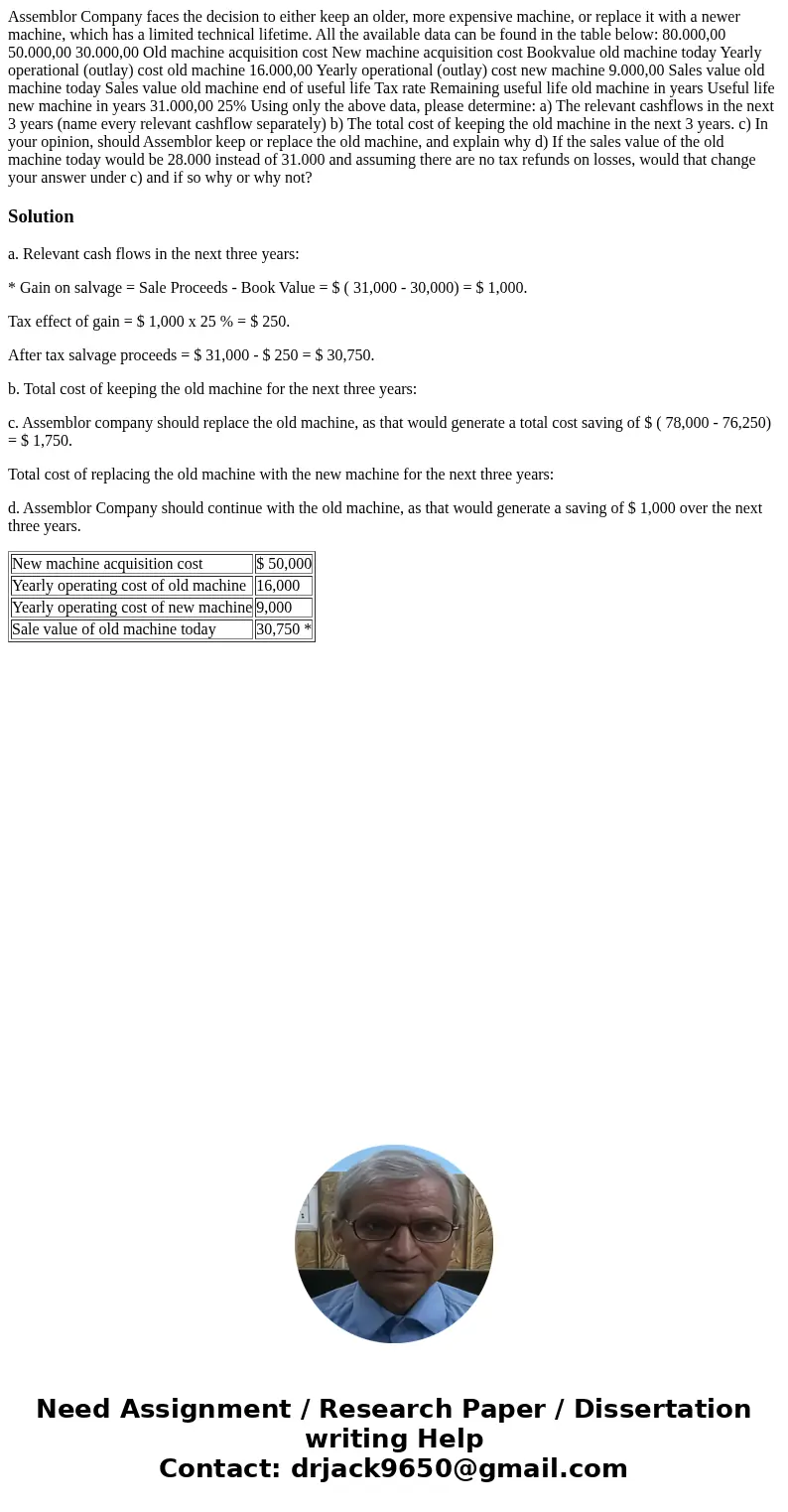Assemblor Company faces the decision to either keep an older
Assemblor Company faces the decision to either keep an older, more expensive machine, or replace it with a newer machine, which has a limited technical lifetime. All the available data can be found in the table below: 80.000,00 50.000,00 30.000,00 Old machine acquisition cost New machine acquisition cost Bookvalue old machine today Yearly operational (outlay) cost old machine 16.000,00 Yearly operational (outlay) cost new machine 9.000,00 Sales value old machine today Sales value old machine end of useful life Tax rate Remaining useful life old machine in years Useful life new machine in years 31.000,00 25% Using only the above data, please determine: a) The relevant cashflows in the next 3 years (name every relevant cashflow separately) b) The total cost of keeping the old machine in the next 3 years. c) In your opinion, should Assemblor keep or replace the old machine, and explain why d) If the sales value of the old machine today would be 28.000 instead of 31.000 and assuming there are no tax refunds on losses, would that change your answer under c) and if so why or why not?

Solution
a. Relevant cash flows in the next three years:
* Gain on salvage = Sale Proceeds - Book Value = $ ( 31,000 - 30,000) = $ 1,000.
Tax effect of gain = $ 1,000 x 25 % = $ 250.
After tax salvage proceeds = $ 31,000 - $ 250 = $ 30,750.
b. Total cost of keeping the old machine for the next three years:
c. Assemblor company should replace the old machine, as that would generate a total cost saving of $ ( 78,000 - 76,250) = $ 1,750.
Total cost of replacing the old machine with the new machine for the next three years:
d. Assemblor Company should continue with the old machine, as that would generate a saving of $ 1,000 over the next three years.
| New machine acquisition cost | $ 50,000 |
| Yearly operating cost of old machine | 16,000 |
| Yearly operating cost of new machine | 9,000 |
| Sale value of old machine today | 30,750 * |

 Homework Sourse
Homework Sourse